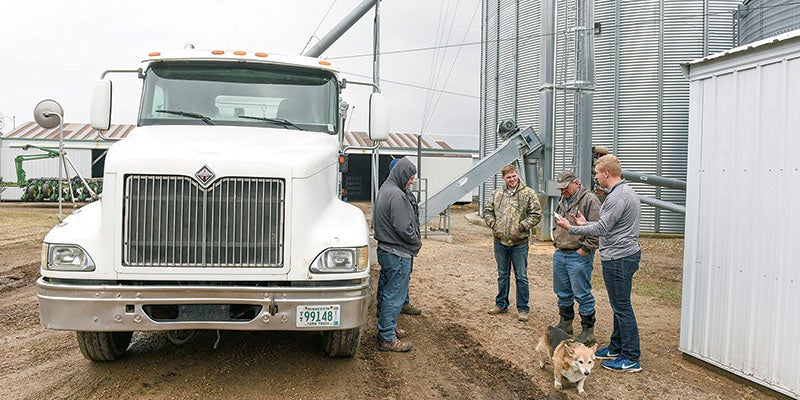CRWD ready for its biggest water-quality project; After big rains, stormwater-detention site could be larger than East Side Lake
Published 8:53 am Monday, May 7, 2018
After a big rainfall, an upcoming project temporarily could retain stormwater that covers more than 50 acres — larger than Austin’s East Side Lake — to improve water quality and reduce flooding.
Known as “Dobbins 1,” the biggest project under Cedar River Watershed District’s nearly $8.4 million Capital Improvement Plan (CIP) is nearing construction later this month in the upland area of Dobbins Creek’s north branch, southeast of Brownsdale. The project will use cropland and conservation land in Red Rock and Dexter townships.
A complex project, Dobbins 1 has been in the works for more than two years with multiple landowners and requiring a couple dozen signatures, said Cody Fox, CRWD project manager. Dobbins 1 will consist of two water-detention structures or earthen dams on land owned by the Kiser, Sash, Johnson and Binkley families.
“A lot goes into planning and getting approvals for a water-detention project of this size,” Fox said. “We really are excited to get crews going on Dobbins 1 because it will help our watershed community’s goals for cleaner water and less flooding.”
Part of the project also involved enrolling 80 acres of farmland into the federal Conservation Reserve Program (CRP) through the USDA’s Farm Service Agency.
Dobbins 1 is targeted in the upland area of North Dobbins, a stream highly prone to flash flooding. North Dobbins flows into the South Branch of Dobbins Creek at Austin’s Jay C. Hormel Nature Center before becoming East Side Lake. Dobbins then flows into the Cedar River State Water Trail in Austin’s Driesner Park.
In large rain events, the Dobbins 1 structures temporarily will hold stormwater — more than 10 feet deep in some spots — that covers more land than the 40-acre East Side Lake created by a dam on Dobbins Creek. At its peak, Dobbins 1 could retain about 250 acre-feet of stormwater (81.5 million gallons) that drains out over two days rather than the typical 12-18 hours for this watershed. One acre-foot is like covering a football field (one acre) with one foot of water.
Once completed, Dobbins 1 is expected to reduce peak flood flows by 82 percent immediately downstream from its structures, keeping about 134 tons of sediment and 218 pounds of phosphorus per year out of Dobbins. One pound of phosphorus can create 300 to 500 pounds of wet algae in a waterway.
Upland storage structures decrease the amount and velocity or speed of stormwater flowing out from the site, reducing the potential for significant downstream streambank erosion. By slowing water, the structures keep soil and nutrients from entering waterways while reducing flood damage to buildings, infrastructure and farm fields.
In April, the CRWD Board of Managers reviewed 10 bids for Dobbins 1 and approved a low bid of $521,706 by Jensen Excavating & Trucking out of Clarks Grove, Minn.
CRWD board member Kevin Kiser, who represents Dodge County, is part of the Kiser family involved with the Dobbins 1 project and has been instrumental in getting everyone on board with the plans, Fox said.
CIP consists of CRWD’s top 25 prioritized projects that range in size, complexity and location. They generally relate to retaining stormwater in storage structures built in upland areas but also include ravine stabilization and flood-risk reduction.
With access to up to $3.8 million in state grants and a local project levy, CRWD can match a $3.2 million grant from The Hormel Foundation via Vision 2020 for the CIP initiative. A $2.2 million state bonding request being led by Sen. Dan Sparks and Rep. Jeanne Poppe is pending as a final funding source for CIP projects.





